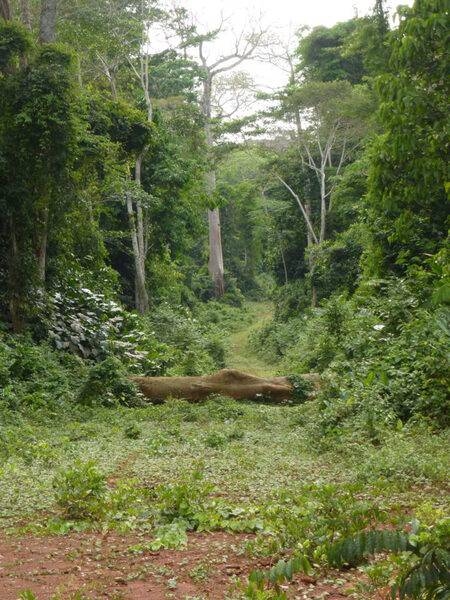Congo, Republic of the
Photos
6 Photos
Filter Categories
All
Filters
Because of its geographic isolation, the Cuvette Region in the northern part of the Republic of the Congo relies on rivers for transportation. From left to right, the Sangha, Likouala-aux-Herbes, Ubangi, and Congo Rivers are shown in this satellite photo. Agricultural plots dot the landscape. Crops grown in the Cuvette Region include cassava, bananas, plantains, pulses, and groundnuts. Image courtesy of NASA.

A riparian section of the Congolese forest. Such land and stream interfaces are common in the rain forest of the Congo Basin. Photo courtesy of NASA / Nadine Laporte.
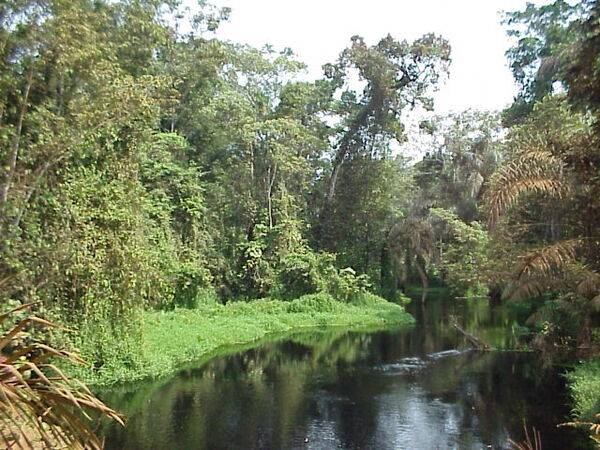
Road networks have expanded in the Republic of the Congo; the roads bring people deeper into the jungle and closer to wildlife. In general, forest roads lead to more human activity and to unregulated or destructive events, such as poaching, mining, or illegal logging. The image of a roadside gorilla demonstrates how roads are encroaching on wildlife habitats. Photo courtesy of NASA / Fritz Kleinschroth.
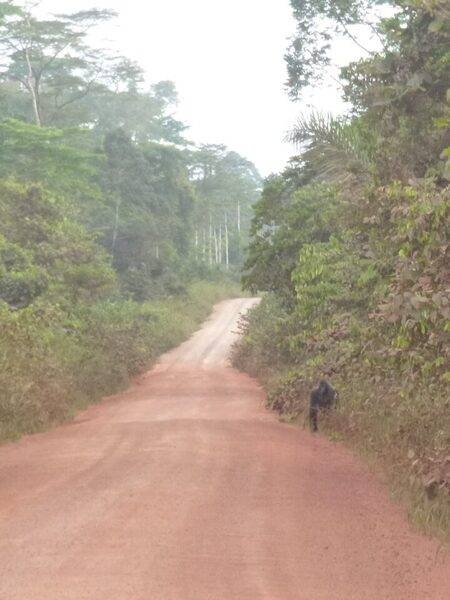
The majority of new roads in the Republic of the Congo are built for selective logging activities, which is one of the main economic activities in the rainforest. Companies practice selective logging where only the most valuable tree species are cut, which usually results in cutting one tree per hectare on average. In order to harvest this timber though, the companies must build roads, usually unpaved, that allow the trucks and tractors to drive deep into the forest. The image shows a scene of timber extraction. Photo courtesy of NASA / Fritz Kleinschroth.
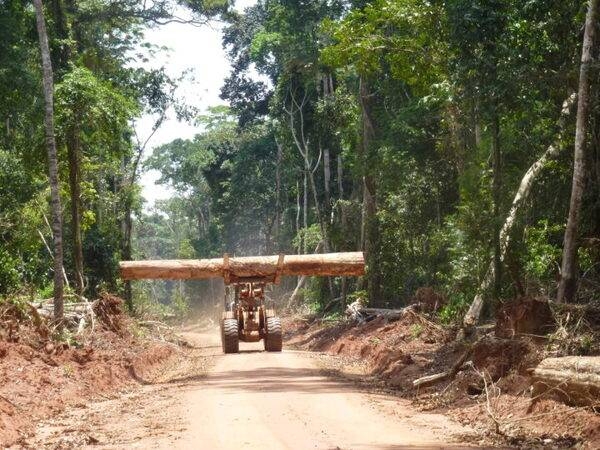
Deforestation rates can be mitigated if a logging company abandons or closes roads. Abandoned roads reduce human traffic and allow vegetation to regrow. The image shows an abandoned road that is overgrown with regenerating trees and plants. The plant species pictured are popular for gorillas to feed on and can help restore the gorillas’ natural habitat. Photo courtesy of NASA / Fritz Kleinschroth.
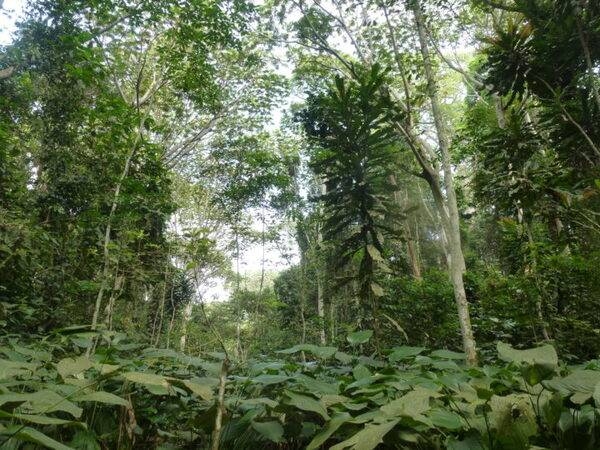
Deforestation rates can be mitigated if a logging company abandons or closes roads. Abandoned roads reduce human traffic and allow vegetation to regrow. The image shows an abandoned road that is overgrown with regenerating trees and plants. The plant species pictured are popular for gorillas to feed on and can help restore the gorillas’ natural habitat. Sometimes a road can be closed off by simply using a log to prevent vehicles from entering. Photo courtesy of NASA / Fritz Kleinschroth.
